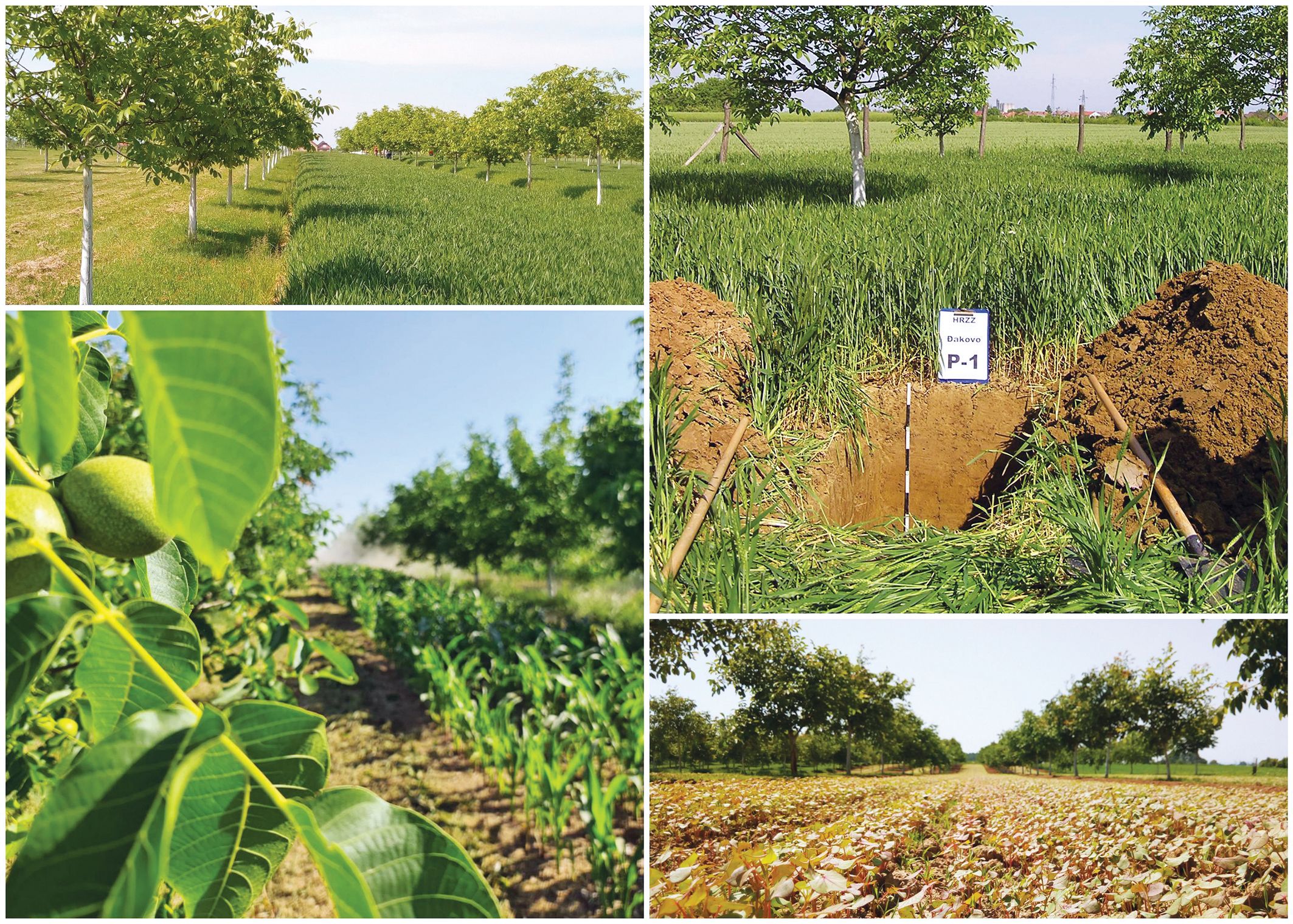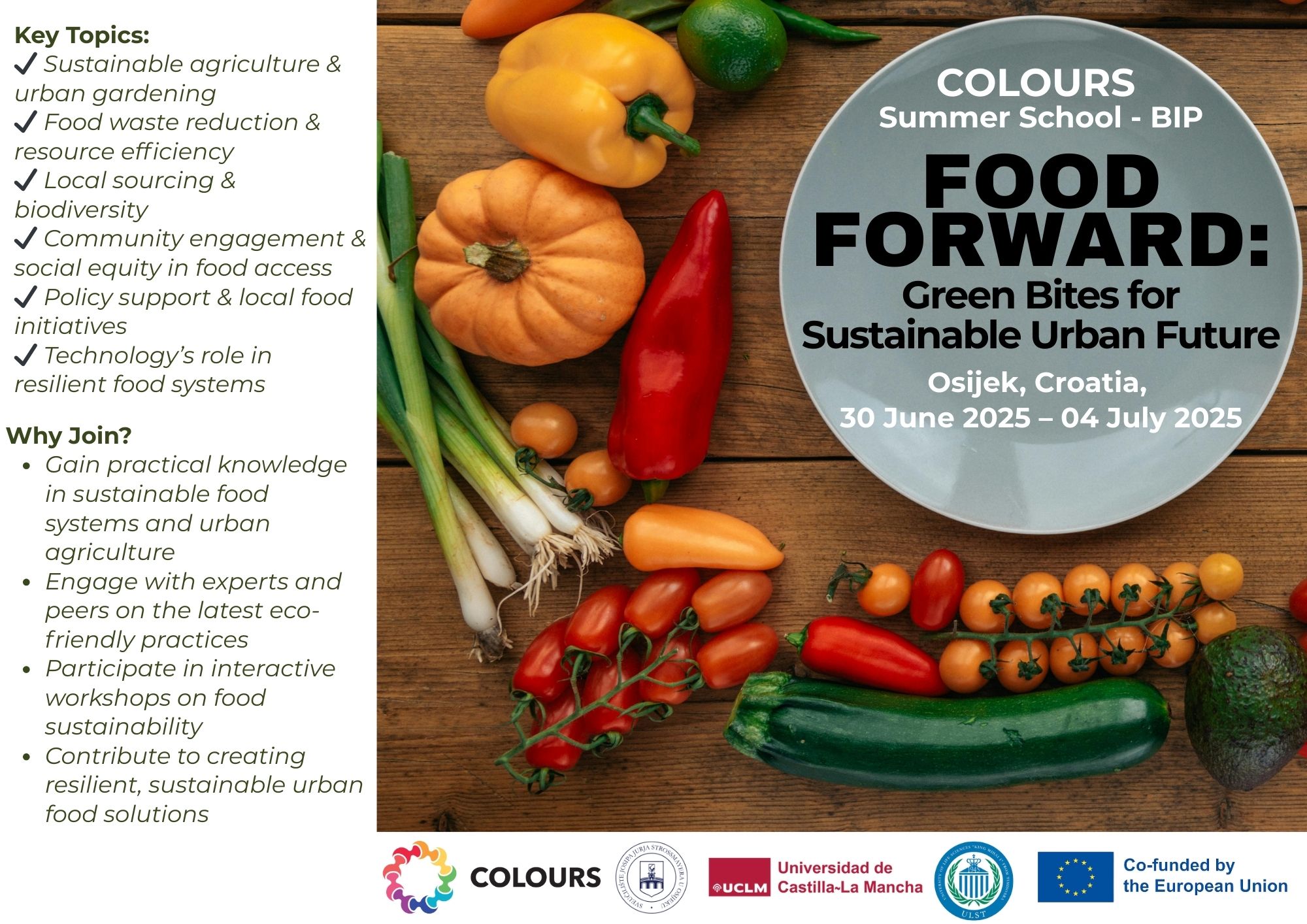Project beneficiary: Faculty of Agrobiotechnical Sciences Osijek
Project coordinator: Assoc. Prof. Dr. Vladimir Ivezić
Project team members: Prof. Dr. Brigita Popović, Assoc. Prof. Dr. Miro Stošić, Assoc. Prof. Dr. Jelena Ilić, Assist. Prof. Dr. Vladimir Zebec, Assist. Prof. Dr. Jurica Jović, Josipa Puškarić, Ph.D., Helena Žalac, M. Eng. Agr., and Ante Bubalo, M. Eng. Agr.
Project duration: 1 February 2018 – 31 January 2023
Source of funding: Croatian Science Foundation (CSF) and Faculty of Agrobiotechnical Sciences Osijek (FAZOS)
Web page: http://fazos.hr/~agroinova/
Consociation refers to breeding of two or more crops in the same soil at the same time. This definition also refers to the so-called silvoarable agroforestry, which implies the combined cultivation of woody species and arable agricultural crops. Agroforestry is a common form of agricultural production in tropical and dry regions, but due to the increasingly unfavourable climatic conditions, it gains on its importance in Europe as well. Currently, there are 160 million hectares of agricultural land cultivated in agroforestry consociation, while 43% (more than one billion hectares) of agricultural land is covered by 10% trees. Such systems have great potential for mitigating climate change as they influence the microclimate, increase the carbon sequestration, reduce greenhouse gas emissions and facilitate better adaptation of the food production system to increasingly pronounced climatic extremes. Trees on agricultural land change the microclimate of that area, primarily by influencing the intensity of solar radiation, by reducing air temperature and wind strength, which consequently increases relative air humidity. Such changes lead to reduced evapotranspiration and finally to a more efficient use of water compared to conventional systems. Moreover, conditions in such agroecosystems are contributing to biodiversity, soil conservation and reduction of plant disease occurrence.
The yields of arable crops in consociation systems largely depend on the type of trees and their age, on planting density and maintenance. The decrease in yield, if compared to classic arable land, is expected and justified because of the reduced production area occupied by walnut trees, the competition for light, nutrients and water. However, with proper design of the system and selection of suitable species, that competition can be reduced to a level where the crop in consociation gives the same if not higher yield as the crop in traditional production. The implementation of the AGROINOVA project is based on the research of walnut orchards of different ages and planting designs, between which rows there are arable crops sown in the crop rotation: wheat – oilseed rape (green manure) – buckwheat – barley – buckwheat (green manure) – corn – ryegrass. At the time of setting up the experiment, one orchard was ten years old with eight-meter distance between rows of walnuts, and the other was three years old with a distance between rows of ten meters. In addition to each consociation system, the experiment also involves control plots – arable land without trees and orchards without field crops. The principles of ecological production are applied to all plots.
Agroclimatic properties (air temperature and humidity, wind strength and direction, precipitation, intensity of solar radiation), pedological properties (volume density, row spacing, water infiltration, pH, humus content, concentration of macroelements and microelements) and agronomic properties (yields, yield components, elementary nutrition of plants), and nematological and microbiological analyses determine the soil biodiversity of these systems. One of the most common questions regarding the project is: “Why a walnut tree, can something grow under a walnut tree?”. This already well-known assumption is based on the negative influence of juglone, which the walnut tree secretes mostly through the roots. However, research proved that the secretion of juglone is not intense in young, grafted orchards and that its action does not have significant toxic effect on crops during the first 15 years after planting. So far, negative allelopathic relations have not been observed in our research. In previous research, we have determined a reduction in the field crop yield in consociation with walnut tree by 5-20%, depending on the crop. However, considering that walnut trees also give yields in these systems, the total productivity per area unit was higher both in comparison to arable land without walnut trees and in comparison to an orchard without arable crops. The highest productivity so far was achieved by the system of walnut trees and barley, which was for 53% more productive than the control orchard and agricultural plot. Moreover, barley grain in this system took in a significantly higher amount of macroelements than barley cultivated in the control plot. Climatic parameters in consociation systems had less oscillation, and we found that trees contributed to the reduction of evapotranspiration, which resulted in up to 83% more efficient use of water. Research results referring to nematode communities also point out the advantage of consociation systems compared to conventional arable land – the consociation of walnut trees and arable crops in the first three years of research had a higher diversity index, a higher average biomass of nematodes and a higher total and average diversity of species, especially of useful omnivores, all of which indicates the stability of the ecosystem. These results are presented in the doctoral dissertation of Josipa Puškarić, Ph.D., and the results of other researches obtained in the project will be elaborated in two more doctoral dissertations of currently employed assistants/doctoral students.




